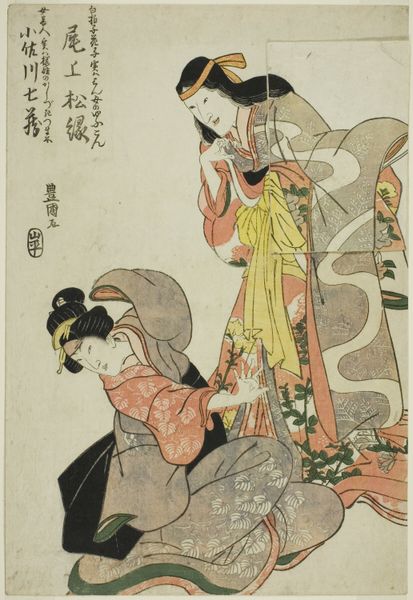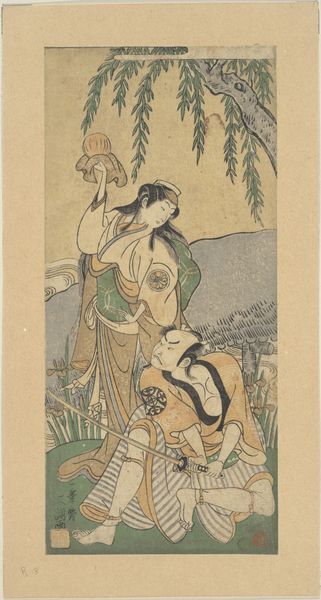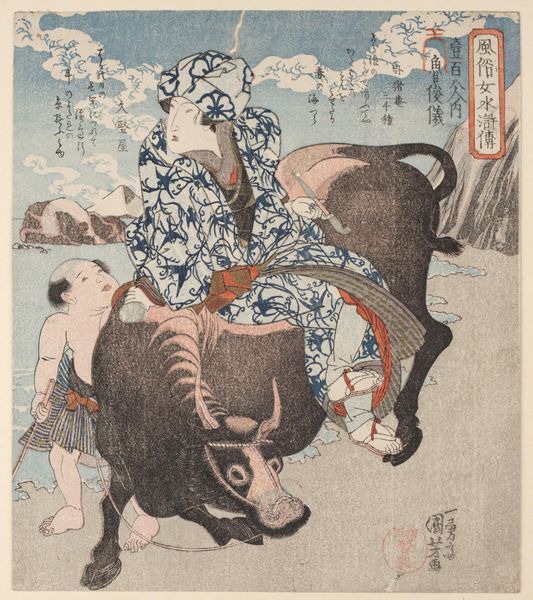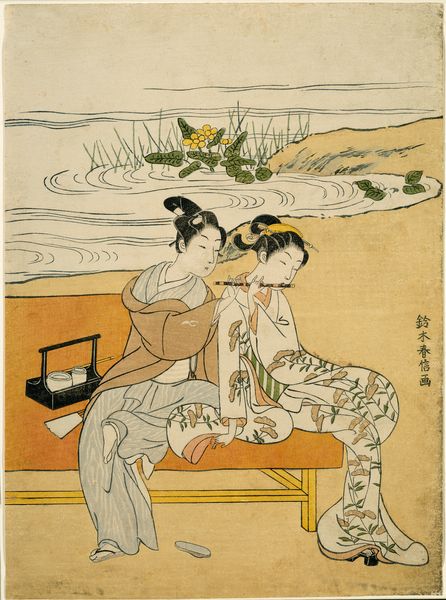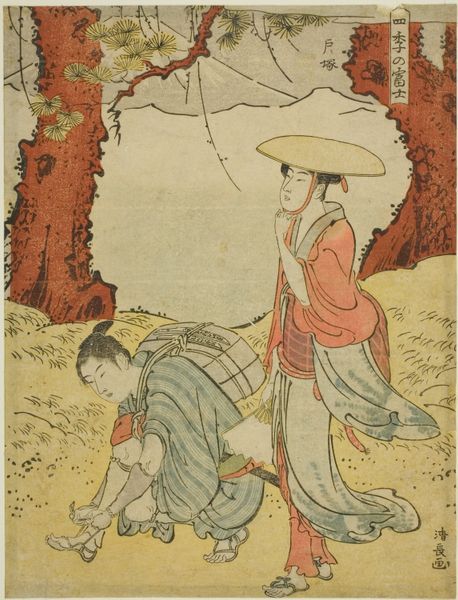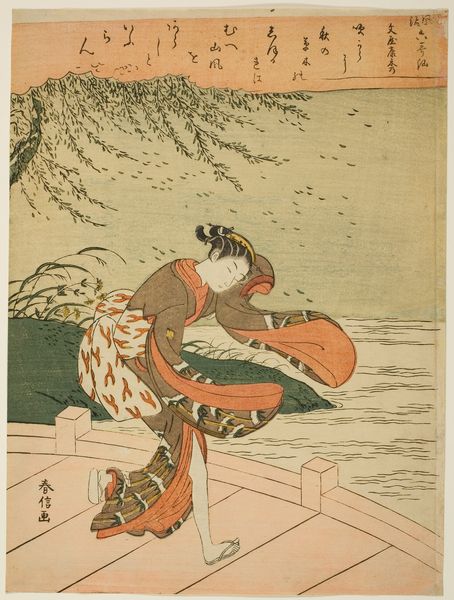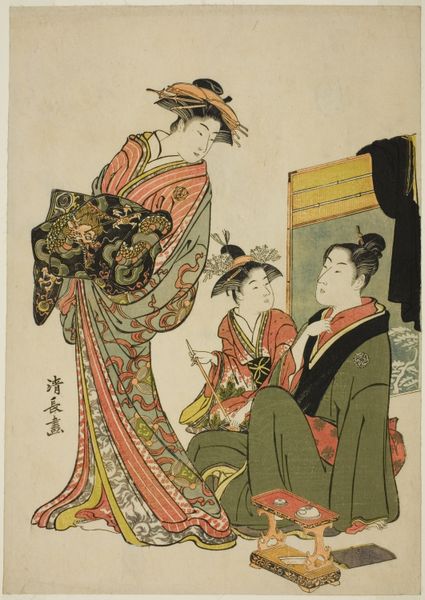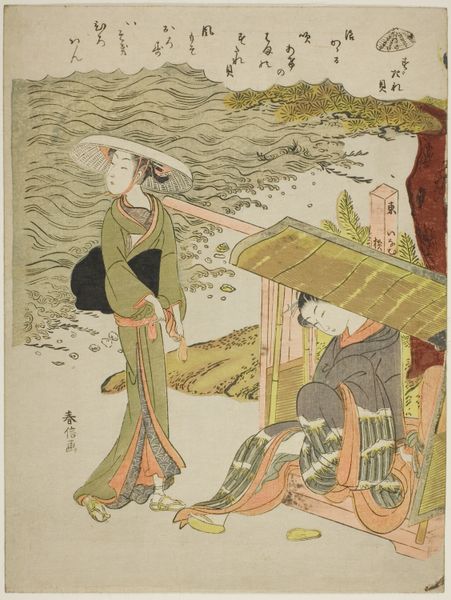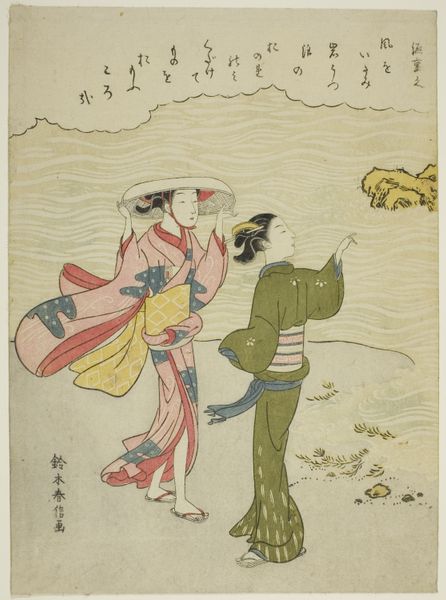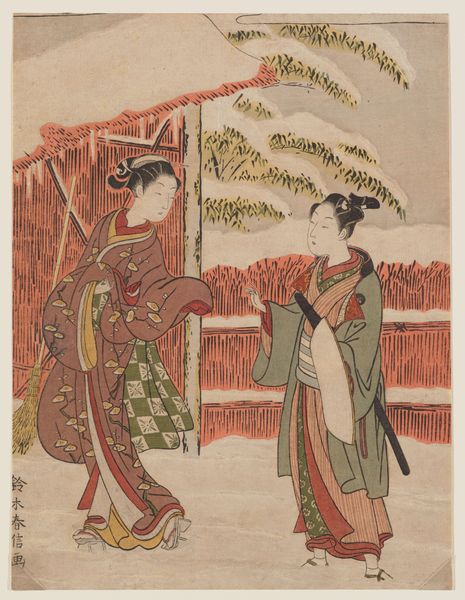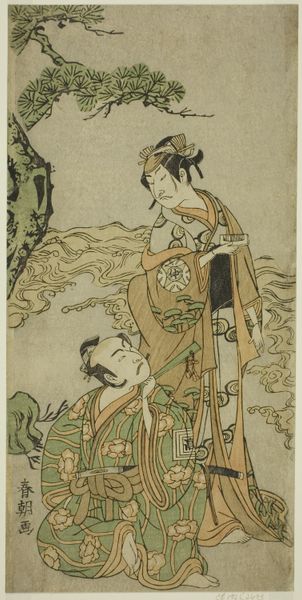
Pausing to admire Mt. Fuji (parody of Ariwara no Narihira's journey to the east) c. 1768 - 1769
0:00
0:00
print, watercolor
#
portrait
# print
#
asian-art
#
landscape
#
ukiyo-e
#
watercolor
Dimensions: 11 × 8 in.
Copyright: Public Domain
Curator: Let’s take a closer look at Suzuki Harunobu’s circa 1768-1769 color woodblock print, "Pausing to admire Mt. Fuji (parody of Ariwara no Narihira's journey to the east)," currently residing at The Art Institute of Chicago. What are your initial impressions? Editor: Well, it's striking how delicately rendered and emotionally still the entire composition feels, yet I am also finding myself quite amused by the artist’s choices. I mean, what exactly is happening with that pony’s coloring? It's quite… vibrant. Curator: Indeed! The somewhat absurd redness is indicative of the print’s critical parody of idealized images and the commercialization of imagery, in which new colors become available. The print appropriates imagery associated with a 9th century noble and poet, recasting him in a more contemporary, slightly less dignified light, given the new possibilities available to print-makers in the 1760s. Editor: It is interesting that you focus so specifically on these developments within commercial print culture, as I find the semiotics here truly brilliant: the contrasting striped pattern of the figure's kimono with the botanically printed outer layer on the mounted woman; not to mention the geometric patterning across both figures, mirrored by the undulating patterns across the lake and beyond! Curator: True, Harunobu makes elegant compositional decisions; but to view these figures apart from their setting is impossible: this is ukiyo-e! Floating world pictures which rely heavily on landscape as social-cultural context. Here, in appropriating Mt. Fuji, Harunobu is able to provide not just scenic, but immediate cultural context for the viewer: who, where, when? Editor: Ah, yes, now I see how this piece makes subtle comments on contemporary taste through a reimagining of the cultural narrative surrounding travel in that period... a very canny critique. Curator: Precisely! These types of commercially available artworks can act as social documentation for understanding attitudes of different historical periods. Editor: This dialogue has greatly shifted my original perspective. While I was initially absorbed by the art’s surface and construction, its patterns and hues, it is, finally, the image’s context that unlocks so much of its significance.
Comments
No comments
Be the first to comment and join the conversation on the ultimate creative platform.
